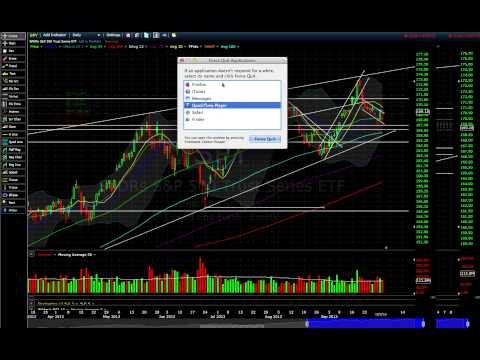Top Technical Indicators For A Scalping Trading Strategy (IWM AAPL)
Post on: 1 Июль, 2015 No Comment

Scalpers seek to profit from small market movements, taking advantage of a ticker tape that never stands still during the market day. (See articles: Introduction To Trading: Scalpers and Understanding The Ticker Tape . ) For years this fast-fingered crowd relied on Level II bid/ask screens to locate buy and sell signals, reading supply and demand imbalances away from the NBBO (National Best Bid and Offer). (To gain greater insights into how this works, see: The Basics Of The Bid-Ask Spread . )They would buy when demand set up on the bid side or sell when supply set up on the ask side, booking a profit or loss minutes later as soon as balanced conditions returned to the spread.
That methodology works less reliably in our modern electronic markets for three reasons. First, the order book emptied out permanently after the 2010 flash crash because deep standing orders were targeted for destruction on that chaotic day, forcing fund managers to hold them off-market or execute them in secondary venues. Second, high speed (frequency) trading (HFT) now dominates intraday transactions, generating wildly fluctuating data that undermines market depth interpretation. Finally, the majority of trades now take place away from the exchanges in dark pools that don’t report in real time.
Scalpers can meet the challenge of this lightning fast era with three technical indicators custom-tuned for scalping and other short-term opportunities. The signals used by these real-time tools are similar to those used for longer-term market strategies, but are instead applied to 2-minute charts. They work best when strongly trending or strongly range-bound action controls the intraday tape, but poorly during periods of conflict or confusion. You’ll know those conditions are in place when getting whipsawed into losses at a greater pace than is usually present on your typical profit and loss curve.
Moving Average Ribbon Entry Strategy
Place a 5-8-13 SMA combination on the 2-minute chart to identify strong trends that can be bought or sold short on counterswings, as well as to get warning of impending trend changes that are inevitable in a typical market day. This scalp trading strategy is easy to master. The 5-8-13 ribbon will align, pointing higher or lower, during strong trends that keep price glued to the 5 or 8-bar SMA. Penetrations into the 13-bar SMA signal waning momentum that favors a range or reversal. (See: Market Reversals And How To Spot Them .)The ribbon flattens out during these range swings and price may crisscross the ribbon frequently. The scalper then watches for realignment, with ribbons turning higher or lower and spreading out. showing more space between each line. This tiny pattern triggers the buy or sell short signal .
Relative Strength/Weakness Exit Strategy
How does the scalper know when to take profits or cut losses? 5-3-3 Stochastics and a 13-bar, 3- standard deviation (SD) Bollinger Band used in combination with ribbon signals on 2-minute charts work well in actively traded markets, like index funds. Dow components and for other widely held issues like Apple (AAPL). The best ribbon trades set up when Stochastics turn higher from the oversold level or lower from the overbought level. Likewise, an immediate exit is required when the indicator crosses and rolls against your position after a profitable thrust. (For more insights, see article: What Are The Best Indicators To Identify Overbought And Oversold Stocks? )
Time that exit more precisely by watching band interaction with price. Take profit into band penetrations because they predict the trend will slow or reverse and scalping strategies can’t afford to stick around through retracements of any sort. Also take a timely exit if a price thrust fails to reach the band but Stochastics rolls over, telling you to get out. Once you’re comfortable with the workflow and interaction between technical elements, feel free to adjust standard deviation higher to 4SD or lower to 2SD to account for daily changes in volatility. Better yet, superimpose the additional bands over your current chart so that you get a broader variety of signals. (To learn more of other band indicators that can guide your trades, see: Capture Profits Using Bands And Channels .)
Multiple Chart Scalping
Finally, pull up a 15-minute chart with no indicators to keep track of background conditions that may affect your intraday performance. Add three lines, one for the opening print and two for the high and low of the trading range that sets up in the first 45- to-90 minutes of the session. Watch for price action at those levels because they will also set up larger-scale 2-minute buy or sell signals. In fact, you’ll find that your greatest profits during the trading day come when scalps align with support and resistance levels on the 15-minute, 60-minute or daily chart. (See video: Trading With Support And Resistance .)
The Bottom Line
Scalpers can no longer trust real-time market depth analysis to get the buy and sell signals they need to book multiple small profits in a typical trading day. Fortunately they can adapt to the modern electronic environment utilizing technical indicators that are custom-tuned to very small time frames.














